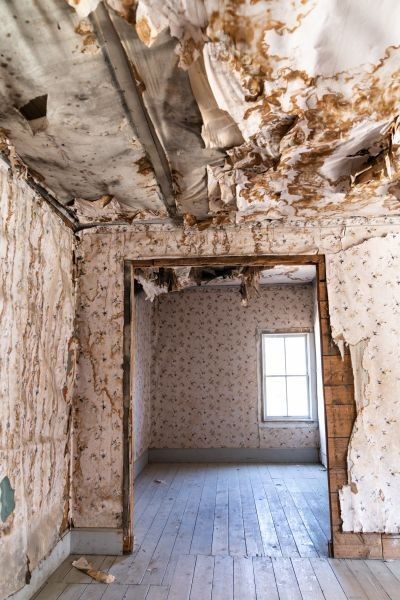
The Importance of Smoke and Soot Removal in Fire Damage Restoration
Fires can cause significant damage to properties, both structurally and aesthetically. Once the fire is extinguished, the process of fire damage restoration begins. Fire damage restoration is crucial for restoring properties after a fire incident and bringing them back to their pre-loss condition. One important aspect of this process is smoke and soot removal.
Understanding Smoke and Soot

When a fire occurs, it releases smoke and soot, which can spread throughout the property. Smoke is the visible product of incomplete combustion, while soot is the byproduct of burned materials. Both smoke and soot can cause extensive damage and pose health risks if not properly addressed.
Smoke consists of tiny particles, gases, and chemicals that are suspended in the air. These particles can find their way into various surfaces, including walls, ceilings, furniture, and HVAC systems. Soot, on the other hand, is the residue left behind after a fire and can settle on surfaces like walls, ceilings, and objects.
The Importance of Smoke and Soot Removal
Smoke and soot removal is crucial for several reasons:
Promotes Health and Safety

Smoke and soot can contain toxic chemicals and carcinogens that can pose health risks when inhaled or come into contact with the skin. Removing smoke and soot helps ensure a safe and healthy environment for occupants and restoration professionals.
Prevents Further Damage
Smoke and soot can continue to cause damage even after the fire is extinguished. The acidic nature of soot can corrode surfaces, leading to long-term damage if not promptly removed. Lingering smoke odors can also permeate fabrics, upholstery, and other porous materials, making them difficult to remove without professional intervention.
Restores Aesthetics
Smoke and soot can discolor surfaces, including walls, ceilings, and furniture. Proper removal and cleaning techniques are necessary to restore the visual appeal of the property. By thoroughly removing smoke and soot, the property can be restored to its pre-fire condition.
Prevents Respiratory Issues
Exposure to smoke and soot particles can cause respiratory problems, especially for individuals with pre-existing conditions such as asthma or allergies. Removing smoke and soot significantly reduces the risk of respiratory issues among occupants.
Ensures Effective Restoration
Smoke and soot removal is a crucial step in the overall fire damage restoration process. By removing smoke and soot, restoration professionals can accurately assess the extent of the damage and carry out the necessary repairs and restoration work effectively.
Soot and Smoke Removal Process
Smoke and soot removal should be carried out by trained professionals who have the expertise and specialized equipment to handle the process effectively. The process typically involves the following steps:
Assessment:
Professionals assess the extent of smoke and soot damage to determine the most appropriate cleaning methods and equipment.
Ventilation:
Proper ventilation techniques are employed to remove residual smoke and odors from the property.
Surface Cleaning:
Specialized cleaning techniques are used to remove soot and smoke residues from various surfaces, including walls, ceilings, and objects.
Content Cleaning:
Personal belongings and furniture affected by smoke and soot are carefully cleaned and restored using appropriate methods.
Odor Removal:
Professional-grade techniques such as ozone treatments and thermal fogging may be used to eliminate smoke odors from the property.
Air Filtration:
High-efficiency particulate air (HEPA) filters and air scrubbers are utilized to remove airborne particles and improve air quality.
Conclusion
Smoke and soot removal are vital components of the fire damage restoration process. It ensures the safety of occupants, prevents further damage, restores aesthetics, and allows for effective restoration work. The process should always be carried out by trained professionals who have the expertise and specialized equipment to handle the task effectively.
Why is smoke and soot removal important in fire damage restoration?
What is the process of smoke and soot removal in fire damage restoration?
Important facts and statistics about fire damage and property restoration:
- In 2019, there was a 43% decrease in structure fire deaths in one- or two-family homes compared to 1980.
- In 2019, there was a 63% decrease in fire deaths in apartments compared to 1980.
- In 2018, public fire departments responded to an estimated 1,318,500 fires in the United States.
- Out of the total fires in 2018, 499,000 occurred in structures.
- The cost of fire damage restoration is estimated to be around $2.8 billion.
- House fires caused 2,620 deaths and $6.9 billion in property damage in a five-year period.
Sources:

